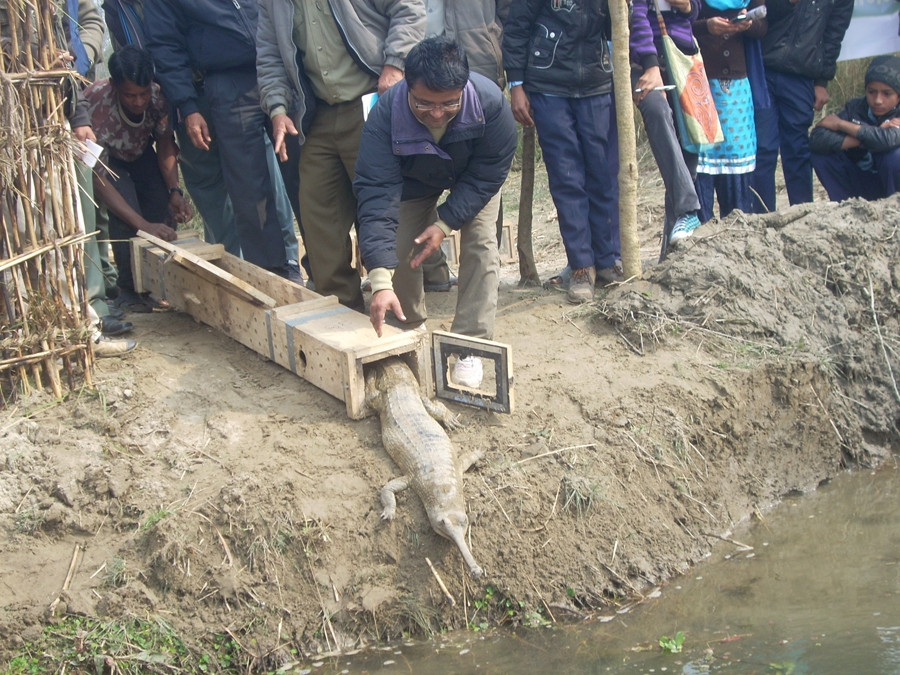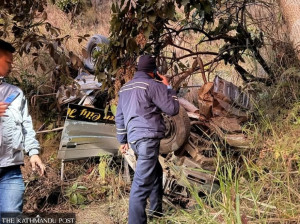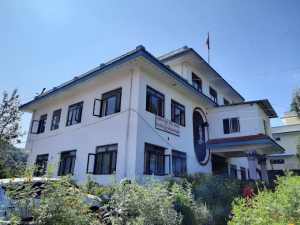Bagmati Province
Challenges to protect endangered Gharials in Chitwan
Nine gharials died after getting trapped in fishing nets in the last fiscal year, conservationists say.
Pramita Dhakal
Gharial population is under threat due to overfishing in various rivers and streams in Chitwan, conservationists say.
Bed Bahadur Khadka, assistant conservation officer at Chitwan National Park, said that around 100 people living near the park have fishing licence.
“Seven Gharials in Rapti River and two in Narayani River died in the last fiscal year after getting caught in fishing traps set up by locals,” Khadka said.
Among the nine dead, eight were baby Gharials that had been released into rivers by Gharial Breeding Centre in Chitwan, park officials say.
Fishermen usually kill baby Gharials that get trapped in their fishing nets; as for adult Gharials, they are released back into the water still entangled in nets, according to Khadka.
“Adult Gharials are left in the river entangled in nets and they die a slow death for lack of food. Some even drown since they can’t swim,” said Khadka.
While challenges are aplenty when it comes to preserving this critically endangered species, the toughest challenge is to sensitise the locals about the necessity of sustainable fishing in Chitwan rivers, say conservationists.
In the fiscal year 2017-18, a male Gharial died after getting trapped in a fishing net in the Rapti river, leading to a decrease in breeding activities in the river for months.
In December 2017, the CNP released a male Gharial from Babai River in Bardiya into Khoriya of Rapti Dovan area to boost procreation among Gharials. Currently, there are only three male Gharials in the Rapti and Narayani rivers.
In Nepal, the Gharial has been enlisted as a protected species. Conservationists said that Gharial habitats are under threat due to human activities, river pollution and depletion in fish numbers.
In 1976, Nepal began Gharial conservation by establishing a breeding centre in Kasara. The centre has 467 gharials at present. So far, the centre has released 1,465 gharials into various rivers in Chitwan. However, most of these fish-eating Gharials have either died or moved far down the river system towards India in search of fish, conservationists say.
The gharial population, which was estimated to be between 5,000 and 10,000 worldwide during the 1940s, declined by almost 96 percent to below 200 by 1976. This species—the only surviving member of the Gavialidae family—breeds only in the wild in Nepal and India and occupies only two percent (less than 200 mature breeding adults in number) of its historical range at present. The gharials have already gone extinct from Myanmar, Pakistan, Bhutan, and Bangladesh.




 16.2°C Kathmandu
16.2°C Kathmandu












